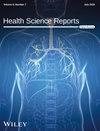Comparing Video-Enhanced Face-to-Face Training and Traditional Verbal Instruction for Anxiety Management in Angiography Patients: A Quasi-Experimental Study
Abstract
Background and Aims
Patients undergoing angiography often experience heightened anxiety, which can adversely affect procedural outcomes. This study compared the efficacy of video-assisted face-to-face training versus conventional verbal instruction in reducing anxiety among angiography patients.
Methods
A pretest–posttest quasi-experimental design was employed at a Shiraz University of Medical Sciences (SUMS)-affiliated hospital (April 2023–December 2023). Of 180 initially enrolled patients, 174 were randomized into two groups: video-assisted face-to-face training (intervention, n = 87) or verbal instruction (control, n = 87). The intervention group received a structured 10-min educational video (accessible via TV and mobile devices) followed by face-to-face discussions with a nurse, while the control group received standard verbal instructions. Anxiety was measured using the Spielberger State-Trait Anxiety Inventory 1 day before and after the intervention. Data were analyzed using independent-samples t-tests, Mann–Whitney U tests, and effect sizes (Cohen's d), with significance set at p < 0.05.
Results
Post-intervention, the intervention group demonstrated significantly lower state anxiety scores (mean ± SD: 34.15 ± 7.72) compared to the control group (mean ± SD: 39.85 ± 9.87), (p < 0.001, Cohen's d = 0.64). Both groups showed significant within-group anxiety reduction (p < 0.001). Demographic analysis revealed that higher education levels, employment status, and income were associated with lower anxiety (p < 0.005), whereas underlying diseases correlated only with pre-intervention anxiety (p < 0.01).
Conclusion
Video-assisted face-to-face training was more effective than verbal instruction in reducing pre-angiography anxiety, with a moderate clinical effect. Demographic factors influenced outcomes, suggesting tailored educational approaches may optimize anxiety management in high-risk subgroups.


 求助内容:
求助内容: 应助结果提醒方式:
应助结果提醒方式:


